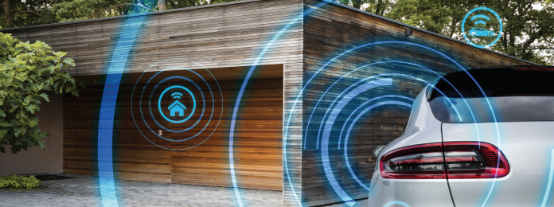What are the six reasons why automakers have upgraded to Wi-Fi 6?
For decades, whenever car enthusiasts discuss car performance, the topic has always revolved around raw speed. For each new generation of vehicles, the focus is on how quickly the car accelerates from 0 to 60, or how long it takes to run a quarter of a mile. Now, these conversations are changing. Electronic devices support cars, enhance the driving experience, and expand the definition of car performance. People are not only concerned about the speed of a given car model, but also whether it is smarter, safer and more functional than similar cars.

Similarly, when using the previous generation Wi-Fi standard, speed is the main goal of each new technology improvement. Today, car manufacturers are rapidly adopting Wi-Fi 6, not only because the latest Wi-Fi 6 standard can greatly improve the original performance, but also bring many other aspects of optimization to the market. Faced with a growing number of use cases inside and outside the vehicle, these optimizations are critical to achieving a seamless wireless experience.
2. Growing Wi-Fi use cases
Today, Wi-Fi is the core technology customers use to interact and connect vehicles. It can be used to play streaming music and videos, provide hotspots for devices in the car, project mobile phones to the dashboard, and download updates for infotainment systems wirelessly. Depots hope to significantly expand these use models in the future to support a growing number of innovative use cases, including:
1. Streaming and recording of multiple camera sources inside and outside the car to enhance driver safety;
2. Upload autopilot sensors and camera data so that car manufacturers can improve driver assistance functions;
3. Upload repair and diagnostic data so that car repair masters can understand car failures before you book a repair.
The car manufacturer even hopes to use Wi-Fi to program the vehicle on the production line before delivering the car to the customer, or to update the car firmware when the car is parked in the dealer's parking lot. Wi-Fi technology can also be used to detect children accidentally left in the car in hot weather.
As use cases continue to increase, everyone including drivers and passengers and even the vehicle itself is using more data, and this demand will only increase. As high-resolution video is supported, infotainment files continue to grow, and more and more people are downloading data to the device on the road. At the same time, the sensors used for autonomous driving will also generate a lot of data. High values are expected to generate 4TB1 per day. These data need to be uploaded for processing and analysis. Firmware updates are also becoming larger, as manufacturers need to download larger software to the vehicle in order to keep the vehicle up-to-date with security, safety, and running algorithms. Car manufacturers need more ways to meet this data growth demand, and Wi-Fi 6 will play an important role in it.
3. Can't 5G meet the demand?
Wi-Fi 6 and 5G cellular networks were put into use almost simultaneously, working together in design and complementing each other in terms of vehicle connectivity. For most connection needs, Wi-Fi has several key advantages. First of all, there is a continuing cost of using 5G, because the licensed frequency band for 5G operation is under the jurisdiction of mobile service providers, which provide services based on individual and enterprise contracts. Second, 5G coverage may be limited in the short term, because infrastructure deployment costs are high, and mobile operators are selective in upgrading. Third, due to saturation or low coverage issues, in order to improve performance, Wi-Fi used to share 50% of total mobile traffic for cellular networks in the past. With 5G operators integrating Wi-Fi 6 as part of their deployment plans, this number is expected to rise to nearly 60% by 2022. twenty three

Jeff James is the Senior Director of Connected Automotive at NXP Semiconductors. He has more than 25 years of experience in the semiconductor industry and has been responsible for leading connection innovation research and development in the automotive, consumer and industry markets.
1 IDC predicts that the global data volume will increase to 163ZB (that is, one trillion gigabytes) by 2025. This number is ten times the 16.1ZB data generated in 2016. The amount of data generated by the vehicle itself is also amazing. Thanks to self-driving test vehicles, the data of self-driving vehicles is growing at an unprecedented rate, usually each vehicle generates between 5TB and 20TB of data per day.
2. Cisco said: “Part of the total mobile data traffic comes from mobile phone interconnection devices, and mobile phone traffic will increase from 54% (13.4 exabytes/month) in 2017 to 59% (111.4 exabytes/month) in 2022. ). The decisive factors for traffic distribution are smartphone penetration rate, dual-mode sharing, mobile Internet usage in the home, and dual-mode smartphone users with Wi-Fi fixed Internet access points at home."
3. According to the opinions of many industry experts, autonomous vehicles will generate an average of 4,000 GB of data per day, and this is only the data generated by driving for one hour per day.
If you want to know more, our website has product specifications for Wi-Fi 6, you can go to ALLICDATA ELECTRONICS LIMITED to get more information

